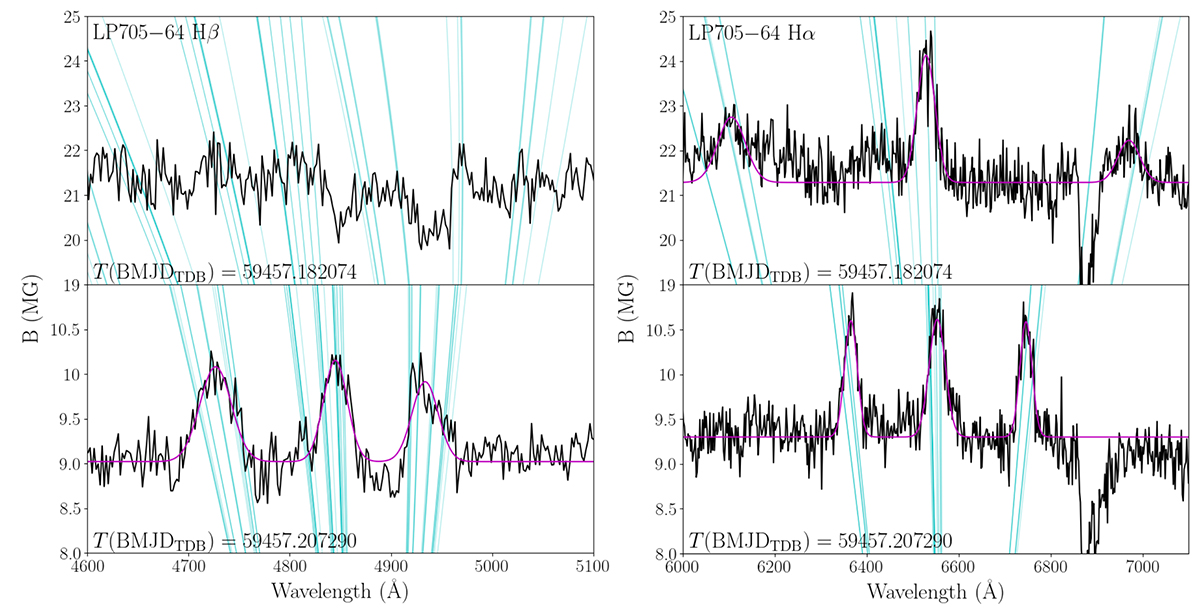Emerging magnetism in white dwarfs

The BUWD group continues observational efforts to understand the emergence of strong magnetic fields in white dwarf stars as they cool down with age. In June 2023, BUWD group members helped in the discovery of two new stars with variable, strongly magnetic Balmer emission lines corresponding to surface magnetic fields more than 5 MG (more 5 million times stronger than in the Sun, see figure above); that work by Reding, Hermes, Clemens et al. was accepted for publication in a June 2023 issue of the Astrophysical Journal. Group members have also shown that at least some of these white dwarfs with Balmer emission lines do not necessarily have very strong magnetic fields, with some <0.05 MG; that work by Elms et al. is published in the Monthly Notices of the Royal Astronomical Society. Very recently, BUWD group members have helped show that the spot sizes on these magnetic stars cannot be composed of simple single spots; that work by Farihi, Hermes, Littlefair et al. is accepted and published in an October 2023 issue of the Monthly Notices of the Royal Astronomical Society.